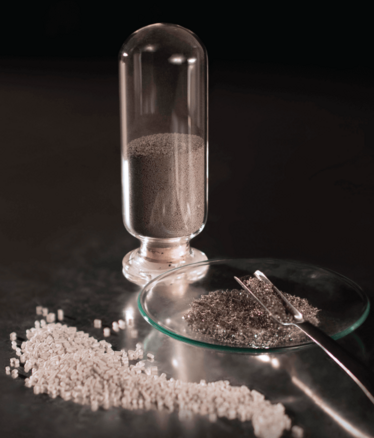
(Precious) Metal Will Never Die
Precious metals-bearing catalysts are essential in some pharma processes – but, once they’re spent, they still hold value. Here, Brad Cook, Vice President of Sales and Marketing at Sabin Metals, reminds us that not all catalysts – and not all recyclers – are the same.
sponsored by Sabin Metal
Please introduce us to Sabin Metal...
Sabin began as one man pushing a scrap cart around post-WWII Brooklyn! Today, we are the largest domestically owned precious metal refiner in North America. Most of your readers will know that pharma uses precious metal-bearing catalysts for the processing and production of pharmaceutical products – at Sabin, we don’t produce the catalysts; rather, we recover platinum group metals (PGMs) from those catalysts. PGMs are probably the most recycled material on earth – and with good reason; did you know that all the platinum ever mined in human history would fit in a four-bedroom house?!
What’s the recycling process, in a nutshell?
When the catalyst is worn out, clients ship it to Sabin where we extract and analyse a representative sample. This serves as the basis for the agreed precious metals content and the money (or pure metal ounces) can then change hands. In this way, the pharma company can recoup costs, or more commonly, recycle those precious metals back to their catalyst manufacturer for use in the next round of fresh catalyst.
What are the key trends in the PGM market?
Over 95 percent of all platinum and palladium comes from Russia and South Africa, and this – alongside many other factors – can render prices volatile. Every once in a while, there will be a 20–30 percent price swing. In spring 2021, for example, floods disrupted work at two of the giant mines in Russia where roughly one quarter of all the platinum and palladium in the world is drawn. As you can imagine, that caused an upward swing.
Most customers try to avoid pricing volatility by using bridge leases. Essentially, they lease the precious metal for their catalysts and then close the lease once the metal has been recycled.
How can our readers get more informed about the intricacies of PGM recycling?
You can explore our “Knowledge Center” on our newly revamped website. There, we pull back the curtain on sampling, contracts, and the key points of procurement and purchasing that companies really need to pay close attention to when they’re comparing different precious metal refiners. Never assume that all refiners are the same – nor that all fresh catalysts are the same. Engineers can trial a new catalyst on the bench, but it’s not possible to do that when you’ve asked someone to recover your precious metals. Due diligence is the key: I’d strongly advise pharma companies to investigate the ethics and financial soundness of any and all potential business partners.




















